
Catchment Connections Issue 6, April 2010
In this issue:
 Editorial
Editorial
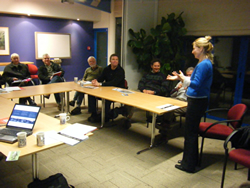 |
Margaret Kilvington engaging the Motueka ICM Community Reference Group in discussion about the Watershed Talk project. |
Welcome to Issue 6 of Catchment Connections.
Kia ora tatou katoa
Land-water management is certainly in a state of flux in New Zealand, with debates raging about irrigation development, dam building, water governance in Canterbury, declining water quality in lowland streams and regional council planning to improve the sustainability of land management.
What we think would help are processes that help stakeholders see the big picture — the system within which they operate — then use best practice science to achieve a balance between development and environmental health, and minimise impacts such as contamination, soil loss and wastage of water. These are fundamental tenets of ICM.
The ICM research programme focussed on the catchment scale for its Big Picture, but research findings are applicable at multiple scales from property up to multi-catchment for example, when considering coastal impacts of catchment discharges.
Stakeholders — yes, people — are central to Integrated Catchment Management. This edition of Catchment Connections summarises some of our research about stakeholder involvement in Integrated Management.
Les Basher and Anne-Claire Loftus report on the use of anecdotal information from river users on the changing state of a river. Margaret Kilvington and Maggie Atkinson report on design and facilitation of dialogue processes for engaging stakeholders. PhD graduate Stephen Beville evaluates angler sensitivity to river attributes such as water clarity, riparian condition and catch rates. And Diarmuid Neilan and I summarise an evaluation for his Master’s thesis on attributes of good water governance based on stakeholder interviews about five regional council water management planning processes.
Finally, we draw your attention in ICM Out and About to our upcoming workshop in Nelson 26–28 April 2010 which synthesizes results from the ten years science and observations from the ICM research programme. We hope to see some of you there.
Andrew Fenemor, Programme Leader, ICM research programme
| Andrew Fenemor Landcare Research, Nelson |
ph +64 3 321 9973 | fenemora@landcareresearch.co.nz |
 Harnessing anecdotal knowledge for catchment management
Harnessing anecdotal knowledge for catchment management
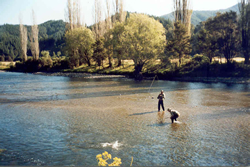
Anglers enjoying the thrills of the Motueka River.
River users and landowners are often keen observers of their environment. Their observations can be useful for filling gaps in scientific knowledge. In this study, anglers who have fished the Motueka River for a long time (mostly >30 years) were interviewed to reveal anecdotal information about the state of the river in the 1990s and to ask the more general question “How can local angler knowledge be valued and used for catchment management?”. The aim was to use anecdotal information to help assess the role sedimentation may have played in the decline of the trout fishery in the mid-1990s, when no sediment data collection happened.
Anne-Claire Loftus, a Masters student of the Central European University, and Les Basher interviewed 16 anglers, including recreational fishermen and fishing guides. A semi-structured interview approach was used that focused on establishing the characteristics? of our sample of fishermen; their experience with the river; the types of information they record or observe; their recollections or records of sedimentation events, their effect and cause; observations of the trout fishery; and general questions about river and catchment management.
Anglers have accumulated extensive knowledge of the catchment – they spend a lot of time in the river (on average 25 days per year), cover a large part of it (although individually they tend to focus on relatively restricted areas of the river at different times of the year), and are keen observers (observation skills are intimately linked to fishing success). Typically, they held very firm, but sometimes divergent, views about the state and trend of the river, its fishery, and the causes of changes in the river. While nearly 70% of the anglers had kept a fishing diary at some time, few of them formally recorded information other than that related to their fishing experience (Table 1) and their recollections of the timing of the effects they observed in the river were therefore often hazy. One exceptional diarist, however, has kept a detailed record of his daily fishing experience and related data (about the river and insect life) for nearly 30 years.
The interview results did not yield a straightforward explanation for the reduction in trout numbers, although there was a fairly common view that it resulted from a lack of recruitment of juvenile fish over several seasons. Observations and opinions varied widely among anglers in response to many of the questions. Many of them recalled seeing high levels of sedimentation in some part of the river at some time, which were confirmed by comparison with Acclimatisation Society records, but there were few precise matches between anglers. The highest degree of consensus was on the presence of sand in the Wangapeka River in both the 1970s and the early to mid-1990s, with many anglers identifying its source as the Dart River. A number of anglers perceived a gradual loss of habitat diversity in the river through sedimentation. Forestry (roading, preparation for planting, harvesting, and post-harvest) and flooding were seen as the dominant causes of sedimentation in the river.
Most (12 out of 16) anglers believed the Motueka fishery has deteriorated, although it was often perceived as a gradual decline and not necessarily related to the decline measured by drift dives at Woodstock in the mid-1990s. Many held the same view about deterioration of the fishery in other rivers in the Nelson region (Riwaka, Pelorus, Rai, Wakapuaka, Maitai). Many commented on a change in the size distribution of fish (from large numbers of smaller fish to smaller numbers of larger fish in recent years), and a decline in the frequency and extent of insect hatches. Anglers suggested the strongest factors affecting trout numbers were sedimentation and in-filling of the river bed, recruitment of young fish, invertebrate numbers, climate (flooding), and forestry (Table 2).
Anglers expressed a variety of opinions about the extent to which anecdotal knowledge could be used to enhance fishery and catchment management. Approximately half of the anglers expressed discontent in their interactions with management agencies such as Fish&Game and Tasman District Council, feeling that their comments and opinions were not sufficiently listened to. While most expressed a generally positive view about the use of angler knowledge, concerns were expressed about objectivity, variable observation skills, and poor memory. Many acknowledged the value of written records, yet few appeared likely to participate in a diary scheme, which has been tried in the past. Angler knowledge can be strongly influenced by interaction with other anglers and by deficiencies in memory.
Without a systematic approach to recording observations (as illustrated by the one detailed diarist) angler knowledge may always have limited application. Its major use is currently as an early warning system through complaints to TDC and Fish&Game.
Table 1. Summary of the main types of information recorded in angler diaries
Angler: |
R |
D |
M |
A |
T |
O |
X |
N |
P |
U |
S |
Total |
Basic information |
||||||||||||
Date |
√ |
√ |
|
|
|
|
|
|
√ |
√ |
|
4 |
River/lake fished |
√ |
√ |
|
|
|
√ |
|
|
√ |
√ |
|
5 |
Location in river/lake |
√ |
√ |
|
|
|
√ |
|
|
√ |
√ |
|
5 |
Time spent (hours) |
√ |
√ |
|
|
|
|
√ |
|
√ |
|
|
4 |
Catching fish |
||||||||||||
Fishing method used |
|
|
|
|
|
√ |
|
|
|
√ |
|
2 |
Number of fish seen |
|
|
|
|
√ |
|
|
√ |
√ |
|
|
3 |
Number of fish attempted |
|
|
|
|
|
|
|
|
√ |
|
|
1 |
Number of fish caught or hooked |
√ |
√ |
|
√ |
√ |
√ |
√ |
√ |
√ |
√ |
√ |
10 |
Number of fish landed |
|
|
|
|
|
|
|
√ |
√ |
|
|
2 |
Number of fish killed |
|
√ |
|
|
|
|
|
|
|
√ |
√ |
3 |
Species of fish caught |
|
√ |
|
|
|
|
|
|
|
|
|
1 |
Sex of fish caught |
|
√ |
|
|
|
|
|
|
|
|
|
1 |
Weight of fish caught |
|
√ |
√ |
√ |
|
|
√ |
|
|
|
|
4 |
Length of fish caught |
|
√ |
√ |
|
|
√ |
√ |
|
|
|
|
4 |
Condition of fish |
√ |
|
|
|
|
|
|
|
|
|
|
1 |
Stomach contents of fish |
|
|
√ |
|
|
|
|
|
|
|
|
1 |
Factors which may influence success |
||||||||||||
Presence of other anglers |
|
|
|
|
|
|
|
|
√ |
|
|
1 |
Weather conditions |
√ |
√ |
|
|
|
|
|
√ |
√ |
√ |
|
5 |
Fish behavior |
√ |
|
|
|
|
|
|
|
|
|
|
1 |
River flow |
√ |
√ |
|
|
|
|
√ |
√ |
√ |
√ |
|
6 |
If river rising |
|
|
|
|
|
|
√ |
|
|
|
|
1 |
If river falling |
|
|
|
|
|
|
√ |
|
|
|
|
1 |
Water clarity |
|
|
|
|
|
|
|
√ |
√ |
|
|
2 |
Water temperature |
|
√ |
|
|
|
|
|
|
√ |
|
|
2 |
Species and numbers of insects |
|
|
|
|
|
|
√ |
|
|
|
|
1 |
Visible insect hatches |
|
|
|
|
|
|
|
|
√ |
|
|
1 |
Sediment levels |
|
|
|
|
|
|
√ |
|
|
|
|
1 |
Table 2. Angler opinions of factors affecting trout numbers
Score |
Factor |
Category |
2.75 |
Sedimentation and in-filling |
Habitat quality |
1.75 |
Juvenile recruitment |
Juvenile recruitment |
1.51 |
Invertebrate numbers |
Food supply |
1.43 |
Regional climate |
Regional climate |
1.35 |
Forestry (general) |
Habitat quality |
0.85 |
Chemicals |
Water quality |
0.83 |
Water uptake of pine trees |
Hydrological factors |
0.76 |
Role of pH |
Water quality |
0.73 |
Floods |
Hydrological factors |
0.67 |
Fishing pressure |
Fishing pressure |
0.60 |
Consequences of works in the river |
Habitat quality |
0.58 |
Pollution – diary farming effluent |
Water quality |
0.33 |
Droughts |
Hydrological factors |
0.20 |
Flow regimes different compared to native trout habitat |
Hydrological factors |
0.13 |
Shag predation |
Predation |
0.10 |
Nitrogen from pine trees |
Water quality |
0.10 |
Tributary – water quality change following water diversion |
Water quality |
0.10 |
UV rays |
Regional climate |
0.10 |
Eel predation |
Predation |
0.10 |
Predation of large trout on smaller trout |
Predation |
0.10 |
Competition from wasps on invertebrates |
Food supply |
0.06 |
Over-abstraction of water from irrigation |
Hydrological factors |
Further information:
| Les Basher Landcare Research, Nelson |
ph +64 3 321 9978 | basherl@landcareresearch.co.nz |
 Cultivating ideas and action, building community resilience
Cultivating ideas and action, building community resilience
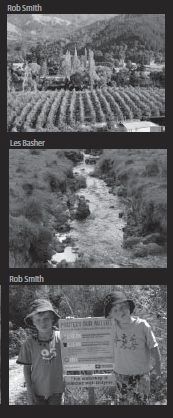 |
People are at the heart of Integrated Catchment Management. So how can people build networks and get engaged in care for their catchment environment? The Watershed Talk project and recently published book explore processes for doing just that.
Worldwide we have become increasingly aware that our social and environmental systems are under pressure. At times these pressures are slow and subtle. They lie almost unnoticed until they can no longer be ignored as the very livelihoods of communities are at risk. Examples are easy to see around us ––water shortages that turn into droughts, or declining fish stock that make an industry no longer sustainable. Alternatively we are seeing what seems to be the increased occurrence of catastrophic events –floods, dramatic storms and unseasonable weather that directly threaten lives. What can also be noticed is that some communities adapt and respond to these changes, both the dramatic and incremental ones, better than others. This phenomenon is termed “community resilience”.
Resilience in ecological systems has been understood for some time as the magnitude of shock a system can absorb while remaining within a given state. However, responding to crises that at first glance seem to be about the environment, actually also depends on our ability to ‘absorb shock’. In other words, our capacity to find a way through the complexity, make plans, and take actions.So when we look at what makes a resilient system in terms of both the environment and the people who live and work within it, two further factors emerge as important:
(i) the degree of self-organisation in society the community and
(ii) its capacity for learning and adaptation.
This is the human and social capital in the community – their resources, creativity, innovation, knowledge, networks and relationships.
In the Watershed Talk project we explored the idea that one of the ways to influence the pool of human and social capital is through the qualities of the conversations we hold about issues that concern us. Public forums, debates, meetings happen all the time in communities. Often these are about dealing with a change, or a dispute over what is already happening. In Watershed Talk we examined whether the way these conversations are held can make a difference ––not only to what you get out of the meeting – but to the individual and collective capacity of those taking part. We termed this ‘a resilience approach to tackling issues’.
While there are many examples of good, fair and productive public meetings it was important to think how a resilience approach to public conversation might differ from some of the less constructive habits of public engagement. For instance, a meeting where the same people speak and dominate the conversation reinforces the status quo. However, increasing community resilience relies on fostering the leadership potential of many different people. So a resilience approach to tackling issues would deliberately widen the scope of those taking part, and foster the confidence of what a range of participants had to offer.
Over eight months, about 20 people from widely different backgrounds local to the Motueka Valley, or with strong local connections, took part in Watershed Talk. The project included individual interviews, take-home tasks, two group meetings and follow-up interviews. The interviews, meetings and tasks were based on enabling participants to explore two questions: ‘Is our catchment being cared for, and how do we recognise that?’, while the research project as a whole looked at the question ‘Can dialogue cultivate community resilience?’
Similarly, if meetings are set up around a standard, pre-formed idea of ‘what the issue is’, this can restrict the creative opportunity for learning about what might really be going on and what might really concern the locals directly affected. A resilience approach would encourage a thorough exploration of the situation before leaping to a conclusion about what to do next. The table below lists a number of comparisons between what can be the unconscious outcomes of public conversations and the potential of applying a ‘resilience approach’.
Traditional and resilience approaches to problem solving |
|
Challenges with traditional approaches to problem solving |
What resilience approaches can offer |
Reinforce existing power arrangements |
Look to different expressions of leadership in participants |
Efficiency focused, e.g. one stakeholder representative |
Abundance of ideas (generosity, profusion, wealth) |
Favours prior understanding of the issues |
Problem revealed, reinterpreted by participants |
Generates polarity of viewpoints |
Respects and relies on diversity and fosters commonality |
Often based on extraction of information for use by ‘official’ decision makers |
Important for all participants to be learning and participating in decision making |
Focused on reaching a decision |
Interested in what goes on beyond decision, i.e. shifts in view, values, action, active citizenship |
Unconscious learning about negative social interaction |
Conscious what messages about social interaction are modelled |
To apply this resilience approach to tackling issues, the Watershed Talk project rested on three pillars
(1) Using a principle-based approach to the design and facilitation of meetings
Watershed Talk was based on set of principles––respect, diversity, empowerment, reflection, generosity and active cultivation. These are a combination of factors recognised as important in resilient systems and good dialogue. Expressing these principles throughout the project was important to the outcomes that could be achieved.
Another way the principle of empowerment was expressed in Watershed Talk was through an ‘ice-breaker’ exercise, where participants talked about tangible and intangible connections to the catchment and located them on a map. This simple task quickly improved the trust and relationship between participants. The strength of networks and relationships in communities is a key ingredient of social capital. In the words of one participant...
I liked [the way people introduced themselves with] that map – like Maori mihi – that talk of connection.
(2) Reflection
Applying a resilience approach to public problem solving can’t rest on a standard recipe. Reflection is important at all stages. This means actively considering how to apply the principles, staying aware of what is happening, and thinking of what can be done differently
(3) Trying innovative techniques
Getting different results often relies on using approaches that take people by surprise. Watershed Talk interwove different techniques to prompt thinking in new ways, and help people make connections with one another. Photography was used in many simple and effective ways and images here are a small sample of those taken by participants during the project.Most importantly the project was conscious throughout of what legacy it would leave –– what had changed for participants, and what future actions might stem from this. This is important in a resilience approach to tackling issues as the enduring qualities of any system are what resilience is all about.
Learning from the Watershed Talk project has been summarised in a short book published by Manaaki Whenua Press.

Further information:
| Margaret Kilvington Independent researcher for the ICM programme |
ph +64 3 328 8052 | margaret.kilvington@gmail.com | ||
| Maggie Atkinson Landcare Research, Nelson |
ph +64 3 321 9976 | atkinsonm@landcareresearch.co.nz | ||
| Andrew Fenemor Landcare Research, Nelson |
ph +64 3 321 9973 | fenemora@landcareresearch.co.nz |
Links:
- Watershed Talk project
- Learning from the Watershed Talk project (published by Manaaki Whenua Press)
 Why anglers prefer some rivers over others
Why anglers prefer some rivers over others
New Zealand’s rivers attract large numbers of international and local anglers. With intensifying land uses and increased visitor numbers putting pressure on freshwater recreational fisheries, it is increasingly important to assess how anglers are affected by changes in environmental quality and the ‘angling experience’. This PhD project does this using a statistical method called ‘choice modelling’.
Based on its popularity among anglers, its accessibility and its ability to sustain high trout stocks the Motueka River is the crown jewel in the Nelson/Marlborough region. However, this river catchment has recently been placed under increasing strain from development and land-use pressure. The National Angler Survey (NAS) has documented an estimated 51% decline in angler visits to the “Mot” over the past 15 years, causing concern to Fish and Game. From a management perspective, it is not precisely clear what the drivers are nor what measures can be taken to sustain angling. Even less well understood is whether there has been a loss in angling value on the Motueka in economic terms.
To understand how anglers are impacted by changes in fishery conditions such as declines in trout size and numbers, erosion, and Didymo, an angler choice experiment was administered in the Nelson/Marlborough region as part of a Lincoln University PhD study. This choice experiment presented anglers with a series of different fishing sites described by the following attributes:
- catch rate,
- trout size,
- travel time,
- expenses,
- angler encounters,
- bag limits,
- Didymo and
- riparian margin erosion.
Anglers were asked to indicate their preferred alternative in six different scenarios. By systematically varying the conditions presented to anglers in a realistic fashion the research was able to observe how anglers respond to different types of conditions. Choice models were estimated from the data to reveal anglers’ preferences, substitution patterns, and the impact resource disturbances have on their value of a day’s angling. Figure 1 provides an example of one of these scenarios.
Figure 1

Note: the top row defines four different types of fishing sites available. Each site is described by the attributes listed in the first column on the left. The option not to go fishing is provided (last column on the right) to allow understanding of when anglers view the fishing site conditions as unsatisfactory compared with other things on which they might spend their time.
The models revealed that anglers fishing in Nelson/Marlborough are highly sensitive to declines in catch rates, trout size, and water visibility as well as riparian margin erosion and Didymo infestation. Analysis of a range of scenarios showed that a 30% decline in water visibility, 30% decline in catch rate, and riparian margin erosion have the potential to reduce the probability of anglers fishing a river like the Motueka by 56%. If disturbances were to be more severe, for example, if water visibility and catch rates were to decline by another 40% the models suggested that probability could fall by 71%. It was found that for a day’s fishing anglers would be willing to pay $54 to have a fishing site free of Didymo, $69 to eliminate riparian margin erosion, and $24 to have a one metre improvement of water visibility on a river like the Motueka.
In summary, the results from this research demonstrate that anglers are highly sensitive to catchment degradation. Loss in the quality of the angling experience on one river can cause significant declines in use of that site – losses in angler satisfaction as well as angling value. The findings have important implications for policy and land-use decisions when balancing economic development with maintaining angling use and value.
Further information:
| Dr Stephen Beville PhD graduate, Environment Society & Design Division, Lincoln University |
stephenbeville@gmail.com |
 Stakeholder views of five catchment processes
Stakeholder views of five catchment processes
Water governance in NZ is currently highly contested. Stakeholders are rightly asking how we can do better at decision-making on water allocation and land-use intensification. This research identifies and discusses 20 attributes for achieving good water governance in New Zealand, based on stakeholder interviews about five RMA catchment management planning and implementation processes.
Water governance refers to the range of political, social, economic and administrative systems in place to develop and manage water resources and the delivery of water services at different levels of society.
Twenty Good Governance Attributes (see Table 1) were derived from questionnaire responses and structured interviews of 56 stakeholders, each involved in one of five Resource Management Act (RMA) catchment management planning and implementation processes. The interviews covered water allocation and water quality management in the following South Island catchments (Fig 1): the Waimea Catchment in Tasman; the Awatere Catchment in Marlborough; the Waimakariri Catchment in North Canterbury; the Waitaki Catchment in South Canterbury; and the Pomahaka Catchment in Otago.
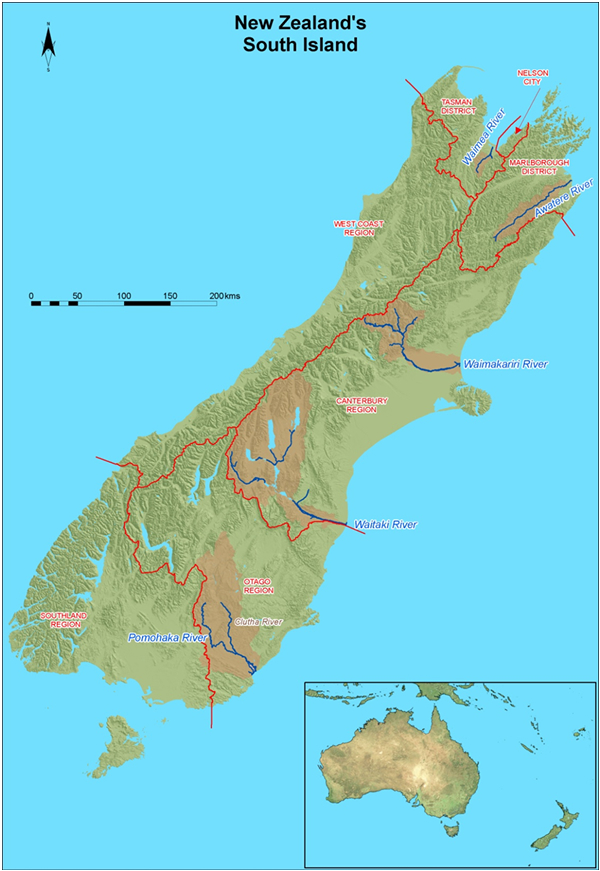
Fig. 1 Case Study water management catchments.
Questionnaire results provided a Strengths-Weaknesses-Opportunities-Threats (SWOT) analysis of the likely effectiveness of each of the five water management planning processes achieving their Environmental Results Anticipated (ERAs). Follow-up structured interviews explored stakeholder views about the barriers to achieving ERAs and institutional shifts that could achieve better outcomes through both planning and implementation phases.
Stakeholders were grouped into government, environmental, iwi, water users, and instream sectors. Their responses led to development of a 3-D governance evaluative matrix (Fig. 2) allowing assessment of the degree of overall satisfaction with each plan and each sector’s degree of satisfaction with the planning process. Stakeholder views about why they were satisfied and what changes would make them more satisfied with these plans and planning processes were synthesized into the 20 Good Governance Attributes presented in Table 1.
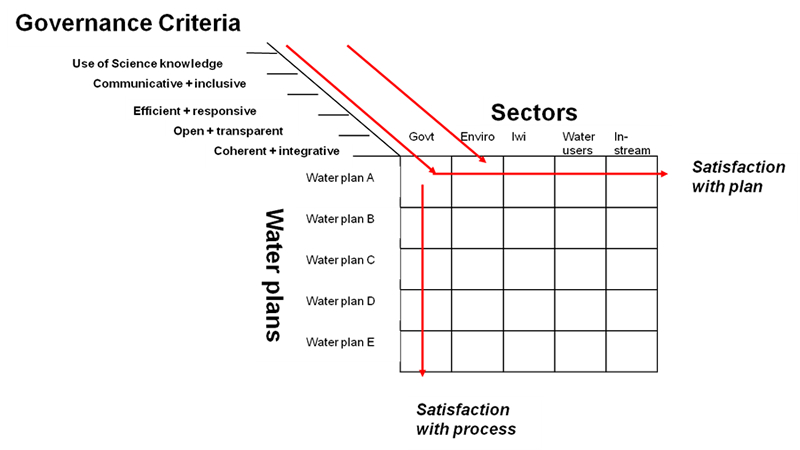
Fig. 2 3-dimensional water governance evaluation matrix
Following are some specific observations from stakeholder sectors from which the more generic attributes in Table 1 were developed:
- Plan for land and water together at catchment scales; more holistic planning is sought, especially by Māori who mostly do not feel well engaged in water management processes
- Land-water (catchment) management requires not just water body standards and limits, but also direct limits on some land-based activities and uses (‘Emission Limit Values’)
- Planning processes are not keeping up with management needs, especially in addressing water quality decline
- Stakeholders need confidence in the science on which plans are based; making science widely available in an understandable and concise form helps engagement
- Water users need to have formalized involvement in planning and implementation but engage other stakeholders too, to avoid marginalizing other stakeholder values – examples cited were landscape, spiritual and amenity values
- Better approaches are needed for balancing diverse values in catchment planning
- Engagement of stakeholders in planning processes needs continuity and focus; fragmentation and long planning processes can erode trust among the parties, while tight timeframes can also disenfranchise some stakeholder groups
- Communication and engagement of water users and key stakeholders in decision-making during low flow periods creates cohesion and confidence in the water management regime
- Water users would like consent renewals to be made less bureaucratic
Table 1.Good Governance Attributes for NZ water management planning
Planning Process Attributes |
Good and timely communication between the full range of stakeholders and the regional council at the early stages of planning |
Attuning to the whole instead of segment of the whole in catchment management decision making |
Avoid political bias in environmental decision making |
Regular consultation and continuous two-way communication with stakeholders during plan process and implementation phases |
Use up-to-date science and monitoring in decision making |
Plan for and incorporate transition between planning process phase and implementation phase |
Facilitate buy-in to plan from anyone administering or implementing it |
Plan Design Attributes |
Determine the actual carrying capacity of water bodies and the desired carrying capacity to meet the present and future needs of the community |
| Clearly connected and defined objectives, policies and methods/rules in the plan |
| Clear and concise allocation framework through the three principles of sound water management: environmental flows, flow sharing above that bottom line, and allocation caps |
| Over-arching resource management vision needed, with generic national priorities on sustainable water management |
| Devolve monitoring to stakeholders within a defined management framework to achieve shared goals |
| Build in flexibility in the plans and planning processes to respond to new pressures and achieve defined objectives |
| Help achieve planning goals through adaptive management |
| Monitor effectiveness and efficiency of plans by measuring them against identified values |
| Water quality targets should influence land-based planning |
| Spread the burden of water management costs among users |
Institutional Attributes |
| Peer review of science and sharing of intellectual knowledge |
| Team approach to water planning and management needed within councils |
| Regional councils held accountable to higher regulatory authority for effectiveness and efficiency of plans and implementation |
Further information:
| Andrew Fenemor Landcare Research, Nelson |
ph +64 3 321 9973 | fenemora@landcareresearch.co.nz | ||
| Diarmuid Neilan Radboud University (Netherlands) and University of Duisburg-Essen (Germany) |
Links:
- Full Report: Improving Water Governance –
Stakeholder Views Of Five South Island
Catchment Management Processes
Out and About
 ICM Connecting Research and Practice Workshop
ICM Connecting Research and Practice Workshop
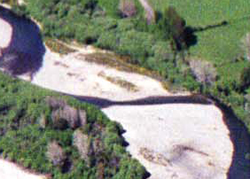
Dear all
To celebrate 10 years of research on Integrated Catchment Management (ICM), the research team is running a 3-day final workshop Monday-Wednesday 26–28 April.
On behalf of the research team, you are invited to attend any part of the workshop.
The flier is available via this link:
http://on-cue.co.nz//ICM%202010%20Workshop%20Information.pdf
and registrations may be made here:
https://online.on-cue.co.nz/ei/cm.esp?id=207&pageid=_2VN0NFFSW
The workshop comprises 3 parts:
| Monday 26 April | |
| 10-5pm | Mobilising-Moderating-Motivating:Engaging People in Collaborative Environmental Management This forum looks at what lies at the heart of integrated catchment management – working with multiple interests and bringing together diverse knowledge. It will include presentations and discussions of innovative ways to build collective capacity for effective environmental management. |
| 7.30pm | Café Scientifique — 10 Scary & Wonderful Discoveries about Catchments With US guest panelist Dr Gene Likens, Director Cary Institute of Ecosystem Studies (CIES), New York and currently a visiting Fellow at the Australian National University developing a long-term ecological monitoring network for Australia, discoverer of acid rain and pioneer of the Hubbard Brook experimental catchments |
| Tuesday 27 April | |
| 8.30 – 5pm | The Legacy of ICM Science from the Motueka catchment Summarising and discussing what we have learned about catchment science, how it has enlisted greater community and stakeholder involvement, and how it can enhance management opportunities, including for other regions. Presentations of ICM research findings from Landcare Research, Cawthron Institute, NIWA, GNS Science, Scion and others. |
| Wednesday 28 April | |
| 8 – 6pm | Ridgetops to the Sea: ICM Field Trip with Stakeholders, Motueka catchment Convenors: Les Basher & Chris Phillips A practically oriented field trip from the upper Motueka to the sea, to discuss the relevance of a ridgetops-to-the-sea perspective in studying catchment behaviour, the legacy that large events or intensive land use in the headwaters have on downstream catchment behaviour over time (e.g. sediment and faecal contaminants) and how a community ICM process has worked in the Motueka catchment (using the Sherry example) and the benefits of interaction between science, resource management and land owners. |
Further details from the conference organiser:
Tracy Young |
ph +64 3 546 6330 | tracy@on-cue.co.nz |
ISSN 1178-5799